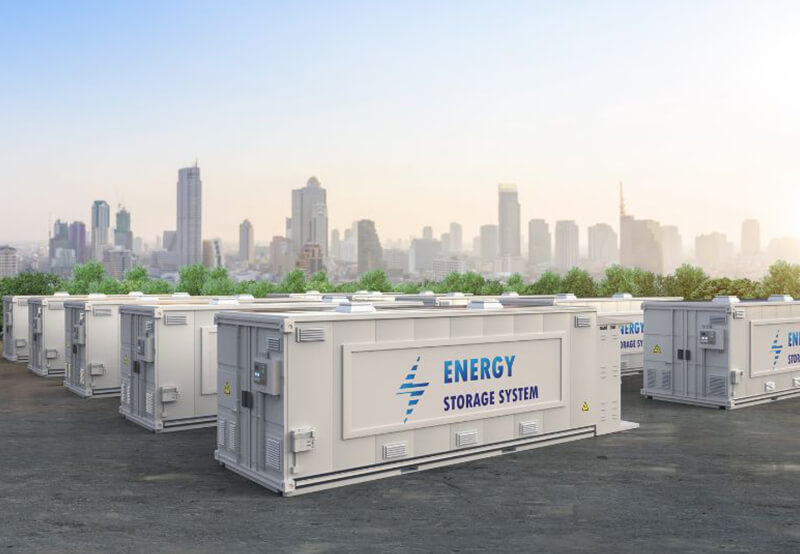Liquid Air Energy Storage: Future of Power Backup
In an era where energy demand is rising exponentially and environmental concerns are at the forefront of global discussions, innovative energy storage systems are becoming increasingly essential. Among the emerging technologies that promise to reshape the landscape of energy management, liquid air energy storage (LAES) stands out as a viable, scalable, and low-cost solution to store excess power for later use.

Whether it’s integrating more renewable sources into the grid or reducing dependency on fossil fuels, liquid air energy storage addresses some of the most pressing challenges facing the energy sector today. This promising technology has started to gain attention due to its high scalability, long duration storage potential, location flexibility, and minimal environmental footprint.
But what exactly is liquid air energy storage? How does it work? How efficient is it compared to other forms of energy storage, such as lithium-ion batteries or pumped hydro? And is it really a practical alternative for widespread deployment?
In this comprehensive introduction, we’ll explore the working of liquid air energy storage, examine its efficiency metrics, break down the pros and cons, and consider its place in the future of sustainable power systems. Whether you’re an energy enthusiast, a policymaker, an investor, or simply curious about emerging technologies, this article offers a concrete and accessible explanation of LAES—backed by facts, real-world examples, and insights from industry trends.
What is Liquid Air Energy Storage?
Fundamentally, liquid air energy storage is a mechanical energy storage system that uses air as the working fluid—yes, the air we breathe. The idea is straightforward but technically sophisticated: air is cooled to cryogenic temperatures, or about -196°C, and then liquefied. In order to power a turbine and produce electricity when needed, this liquid air is first kept at low pressure in insulated tanks before being transformed back into a gas.
LAES offers geographical flexibility and modular design, which makes it suitable for a wide range of applications, from grid balancing to industrial power backup to renewable integration. This is in contrast to traditional batteries, which rely on chemical reactions or hydro storage, which require specific geographical terrains.
How Does Liquid Air Energy Storage Work?
Understanding the liquid air energy storage working process reveals just how clever this technology really is. It generally involves three key phases:
1. Charging (Liquefaction) Phase: Electricity—often surplus or off-peak renewable energy—is used to compress and cool atmospheric air. The air is cooled to a cryogenic temperature until it becomes a liquid. The energy is effectively stored in the form of this liquid air, which occupies about 1/700th the volume of gaseous air.
2. Storage Phase: The liquefied air is stored in insulated, low-pressure tanks, similar to those used in the industrial gas industry. These tanks can store the energy for hours, days, or even weeks, depending on the design and application.
3. Discharging (Power Recovery) Phase: When power is needed, the liquid air is pumped to high pressure, vaporized by ambient or waste heat, and then expanded through a turbine to generate electricity. This process is entirely mechanical, with no chemical reactions involved.
This method makes LAES unique in its ability to scale and decouple power and energy capacity—meaning you can increase storage duration without changing the output capacity and vice versa.
Liquid Air Energy Storage Efficiency
Now, let’s address a fundamental question: Is LAES efficient enough to be practical?
The liquid air energy storage efficiency—typically measured by round-trip efficiency (RTE)—ranges between 50% to 70%, depending on how the system is designed and whether waste heat or cold recovery technologies are employed. While this may appear lower compared to lithium-ion batteries (which can reach 85% or more), LAES compensates for this with several critical advantages:
- No degradation over time, unlike batteries
- Use of readily available materials (air, steel, concrete)
- Minimal environmental impact
- Low capital costs for long-duration applications
Moreover, advancements in thermodynamic integration—such as combining LAES with industrial waste heat or LNG cold recovery systems—can significantly boost efficiency while improving overall economic viability.
Liquid Air Energy Storage Pros and Cons
Like any technology, liquid air energy storage has its own strengths and limitations. Here’s a balanced look at liquid air energy storage pros and cons:
Pros:
- Low Environmental Impact: Uses air, avoids toxic materials
- Scalable and Flexible: Suitable for large-scale and modular deployments
- Long Life Cycle: Mechanical components have long operating lives and no performance degradation
- Safe and Non-Flammable: No risk of thermal runaway or explosions
- Use of Existing Infrastructure: Leverages conventional engineering and industrial supply chains
Cons:
- Lower Efficiency: RTE can be lower than electrochemical batteries
- Capital-Intensive at Small Scale: May not be viable for very small-scale systems
- Needs Heat Sources for Optimization: Best performance when integrated with external heat or cold sources
- Limited Commercial Deployment: Still in early stages compared to mature technologies
Nonetheless, many of these drawbacks are being actively addressed through ongoing research, pilot projects, and hybrid system designs.
Real-World Applications and Projects
While LAES may sound futuristic, it’s already making its mark in the real world. One of the most well-known commercial projects is Highview Power’s CRYOBattery in the UK. This grid-scale system provides 250MWh of energy storage, helping stabilize the grid and integrate more wind and solar energy.
These real-world implementations demonstrate that liquid air energy storage (LAES) isn’t just theoretical—it’s technically feasible, economically competitive, and environmentally aligned with our global energy goals.
Other countries, including the US, China, and Australia, are also exploring LAES through pilot programs and partnerships with industrial players and government agencies.
Why Liquid Air Energy Storage Matters
In the push toward net-zero carbon goals, energy storage is the linchpin that enables high penetration of renewable energy into the grid. Solar and wind are intermittent—meaning they don’t always produce power when we need it. Energy storage systems like LAES bridge that gap by capturing surplus energy and releasing it during peak demand.
Here’s why liquid air energy storage is gaining ground as one of the most promising technologies:
- Long-duration storage (4 to 12+ hours or more)
- Energy arbitrage (buy low, sell high)
- Black start capability (can help restart the grid after a blackout)
- Renewable energy integration (balancing wind and solar)
- Industrial applications (backup for manufacturing or remote operations)
As the global energy mix shifts toward decentralized, renewable-heavy grids, LAES can play a central role in ensuring resilience, affordability, and sustainability.
Conclusion: The Road Ahead
The world is moving towards a clean-energy economy, and with that, not only it should have a smarter approach to the production of renewable electricity but also to the storage and dispatch of renewable electricity. The more we recognize the shortcomings of more conventional forms of storage whether in terms of cost, geography, scalability or sustainability the more the technologies such as liquid air energy storage like the one mentioned offer a lung full of fresh air, quite literally.
With a simple working principle, flexible deployment options, and promising real-world performance, liquid air energy storage (LAES) is positioned to play a critical role in reshaping how we manage energy. It is not without its issues, but the possibilities of using the technology to make storage cost-effective and at a large scale and environment-friendly enough are gaining the interest of policymakers, engineers, and investors alike.
As we continue to invest in clean energy, understanding the liquid air energy storage efficiency, pros and cons, and working mechanisms will be vital for making informed decisions about our energy future. Being either a grid operator or energy developer as well as the one who is interested in reading the information, one can see that LAES cannot be called only the futuristic project but a power facility that should exist and whose time has come.
Frequently Asked Questions (FAQs)
The core concept of LAES is to convert electricity into liquid air during low-demand periods and recover it later to generate electricity during high-demand times. It’s a form of mechanical, long-duration energy storage.
While batteries are more efficient for short-duration storage, LAES is better suited for grid-scale, long-duration energy needs. Batteries degrade over time, whereas LAES systems have longer lifespans and minimal maintenance.
Typical round-trip efficiency for LAES ranges from 50% to 70%, which can improve when combined with waste heat recovery or LNG systems.
LAES is safe, scalable, environmentally friendly, and uses readily available materials. It can operate independently of terrain and is suited for industrial and grid-scale storage.
LAES has lower efficiency compared to lithium-ion batteries, and it may require significant capital investment. It’s also currently less commercially mature than some other technologies.












